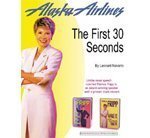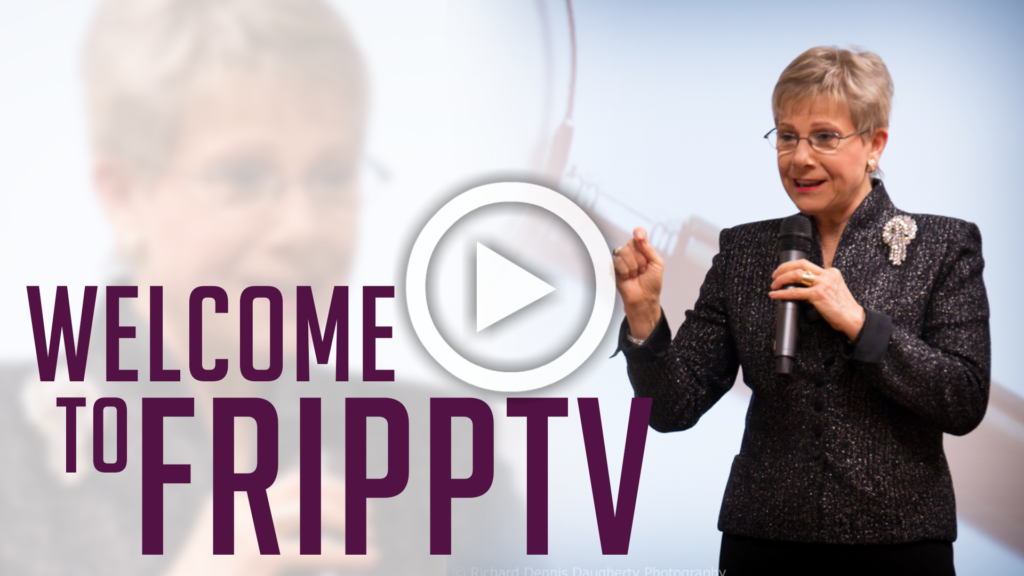Do you immediately engage your audience? Powerful openings are key to successful presentations. Learn how to craft and deliver your openings so you always engage your audience within the first 30 seconds of your talk.
 The First 30 Seconds
The First 30 Seconds
Innovative Openings Launch Memorable Meetings
Patricia Fripp was coaching a CEO from a major corporation. He had eight minutes to outline a money-saving program to his employees. Instead of leading off with money talk, she suggested he walk on stage and say, “We are here to talk about heroes,”
and then pause . . .
and continue pausing . . .
for a long,
long
time.
The effect was not lost on the audience. Slowly, the titters began, followed by an outburst of laughter. But the tactic sent the message. Where are the heroes? Continuing, the speaker pointed out, “They may be sitting behind you, they may be sitting in front of you, or they may be you.”
Every single person in the audience sat forward. “They knew he was talking directly to them,” recalls Fripp. She is a San Francisco-based, in-demand executive speech coach and sales presentation skills expert. “The audience was enthralled. What he proved was that this was not going to be another dull company speech.”
Fripp notes that, “Today’s audiences are stimulation junkies with short attention spans. If they are not engaged, they are likely to be on social media.”
The first 30 seconds has ripple effects; what happens during that time can make or break a meeting. Because the stakes of meetings can be so perilously high, more and more companies are calling on the professionals like Patricia Fripp to help make a presentation powerful.
Fripp advises, “The purpose of an opening is to arouse your audience’s interest in your subject. If you don’t engage them in the first few minutes, you are unlikely to ever gain their total attention. I encourage my clients to make their openings – their first 30 seconds – riveting.”
Openings are the one of the most important elements of any presentation. Fripp said, “It can be a dramatic statement, such as, “This emerging technology is going to affect your business, it might even put you out of business.”
She recommended that one of her speech coaching clients use this as his opening at a recent industry gathering. The message: If you don’t change, you’ll end up fighting a war you can’t win. She recommended that he then soften the blow by telling his audience not to worry too much and presenting them with new strategies.
Stories are also an effective way to grab and hold an audience. “When you think of any compelling speaker,” says Rick Barrera, a business strategist and popular speaker, “you think of someone who can really tell a story to engage an audience and relate that to solid content. Stories make the content interesting.”
Humorous openings are fine as long as the humor appropriate and relates to the subject or the audience. “You can tell a long joke if the story has a big payoff,” says Barrera.
Another effective opener is a great personal story. Fripp coaches her clients to use personal stories that have well-developed characters, sparkling dialogue, and an obvious lesson. In framing their anecdotes, she suggests they tell a story in which the audience can “see the person behind the position” and then relate it to their specific message.
For example, to convey the message of the importance of corporate citizenship, she asked one of her CEO clients who had to address 1,500 sales professionals, “How do you describe corporate citizenship to your children?” His story modeled her example well.
He said, “It was the day after Christmas. I sat my two children down and said, ‘You are very lucky children. You have generous parents and even more generous grandparents. Perhaps you would like to give me one of your gift certificates. We can cash it in and send it to children who no longer have homes.” He told her, “I was so proud of my 14-year-old son. He said, ‘How much do I give? I could give you all of my savings, all of my pocket money, and all my Christmas gifts. It would not be enough to make a difference.’ I told him, “You never give it all. You just give enough that it hurts a little.”
More Than Words
Grabbing an audience is only the first step. “What’s harder is keeping their attention,” says Jim Hall, Director of Marketing for audiovisual products at Epson America in Long Beach, California. “We are the television generation. We expect to be entertained, and the more professional the presenter, the higher that expectation.”
For Hall, the golden rule is to make sure he knows the audience and finds a subject they care about. He uses a variety of techniques when he promotes Epson products to large groups. He maintains eye contact with the audience and makes large, theatrical gestures to make a point. “It’s extra important,” he says, “to change inflection. If you don’t vary the tone of your voice, even if they are interested in what you’re saying, they’ll go to sleep.”
Keep It Fresh
“Meetings should have good stories and good visual aids, but you can’t think that’s enough,” says Mel Silberman, professor of Adult and Organizational Development at Temple University and author of 101 Ways to Make Meetings Active. After a presentation, he has participants turn to each other to discuss its meaning.
Adapted from an article by Leonard Navarro for Alaska Airlines.
Powerful Persuasive Presentations: Powered by FrippVT Virtual Training
FrippVT is a state-of-the-art, web-based training platform that emulates live training and coaching. It is almost as if Presentation Expert and Executive Speech Coach, Patricia Fripp were sitting in front of you. FrippVT is designed to be immediately engaging and makes it fun to learn. If you are a novice presenter or a seasoned professional, you will find the content both practical and relevant.
Sign up for your complimentary trial and discover how FrippVT can transform you and your team. Take advantage of your free trial.
“I am an enthusiastic FrippVT member and this is the BEST training I have seen.”
– Mohan Subramanian, IT Advisor and Leadership Coach, Agrata Consulting
Executive Speech Coach and Hall of Fame Keynote Speaker Patricia Fripp works with individuals and companies who realize that powerful, persuasive presentation skills give them a competitive edge.

